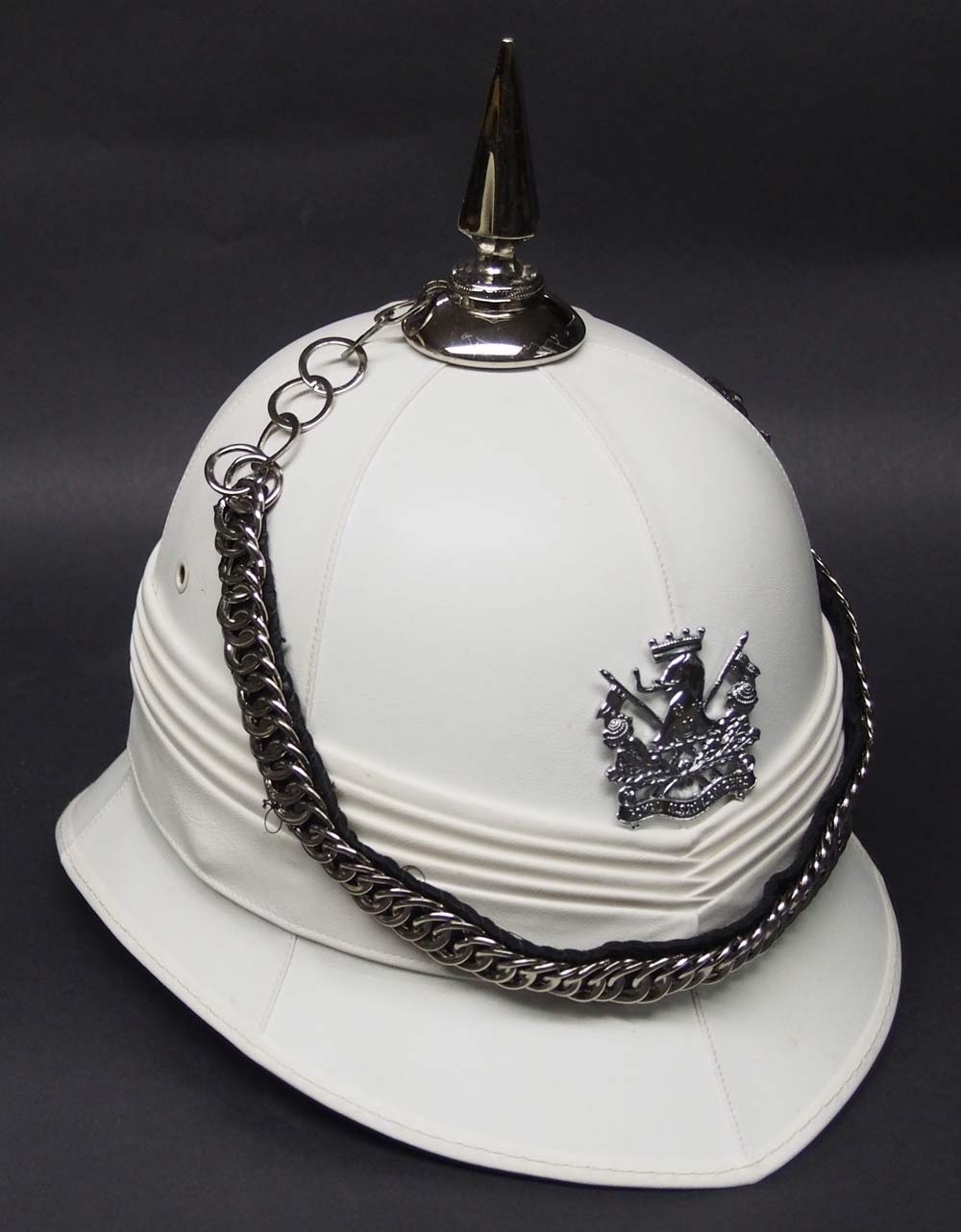
While the sun/pith helmet isn’t largely associated with the Australian military, at least not as much as the slouch hat, the helmets are still in use today for those men and women in the military bands. Currently two different units wear a modern-made plastic version of the iconic “colonial pattern” sun helmet.
The Australian Army Band Corps (AABC), the Australian Army’s musical band, wears the white plastic helmets. The unit is roughly equivalent of the Corps of Army Music of the British Army, or the Music Branch of the Canadian Forces. The AABC was formed in August 1968 and provides the Army with musical support and seeks to improve the Army’s public image.
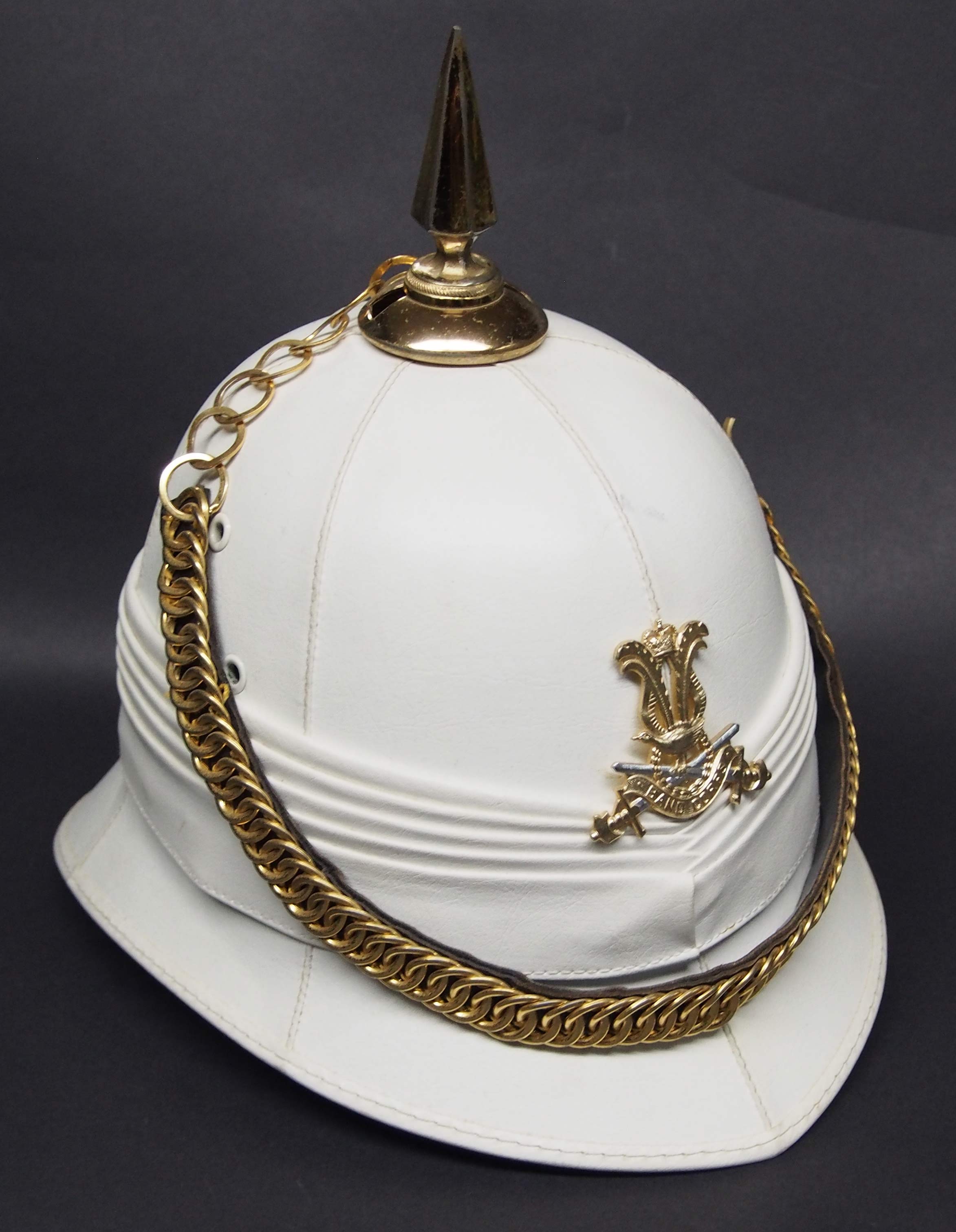
Helmet of the Australian Army Band Corps
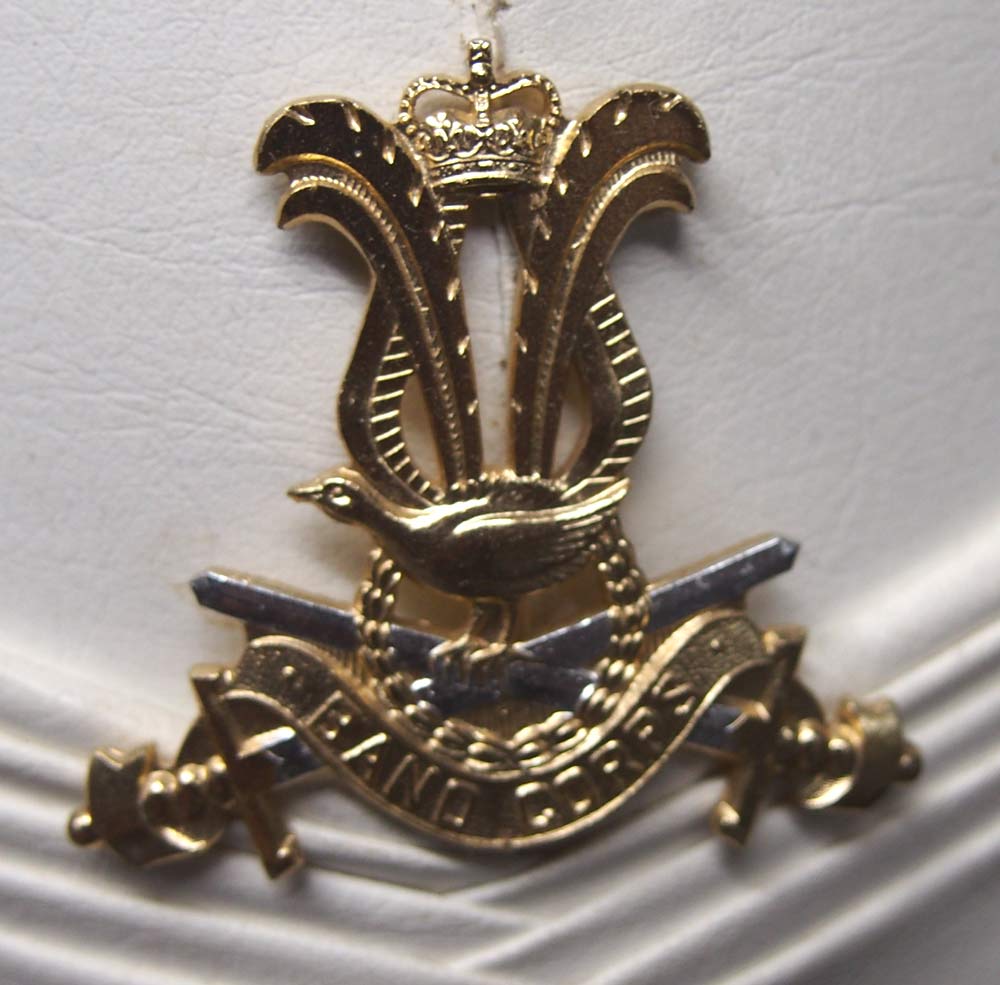
The regimental badge of the Australian Army Band Corps
The AABC consists of 11 individual bands; five full-time and six part-time which are located in the capital city of each state as well as the regional cities of Wagga Wagga, Townsville and Newcastle.
The Lancer Band
The other unit is even older. It is the Lancer Band, which serves as the Regimental Band of the 1st/15th Royal New South Wales Lancers. It is actually the oldest Australian military band still in continuous service being formed in 1891. The band is an organic formation of the regiment and is co-garrisoned at Lancer Barracks in Parramatta, Sydney, New South Wales. The Lancer Band is made up of Australian Army soldiers who serve as musicians as part of their Australian Army Reserve service. The band performs at government, community, military, and returned servicemen’s functions.
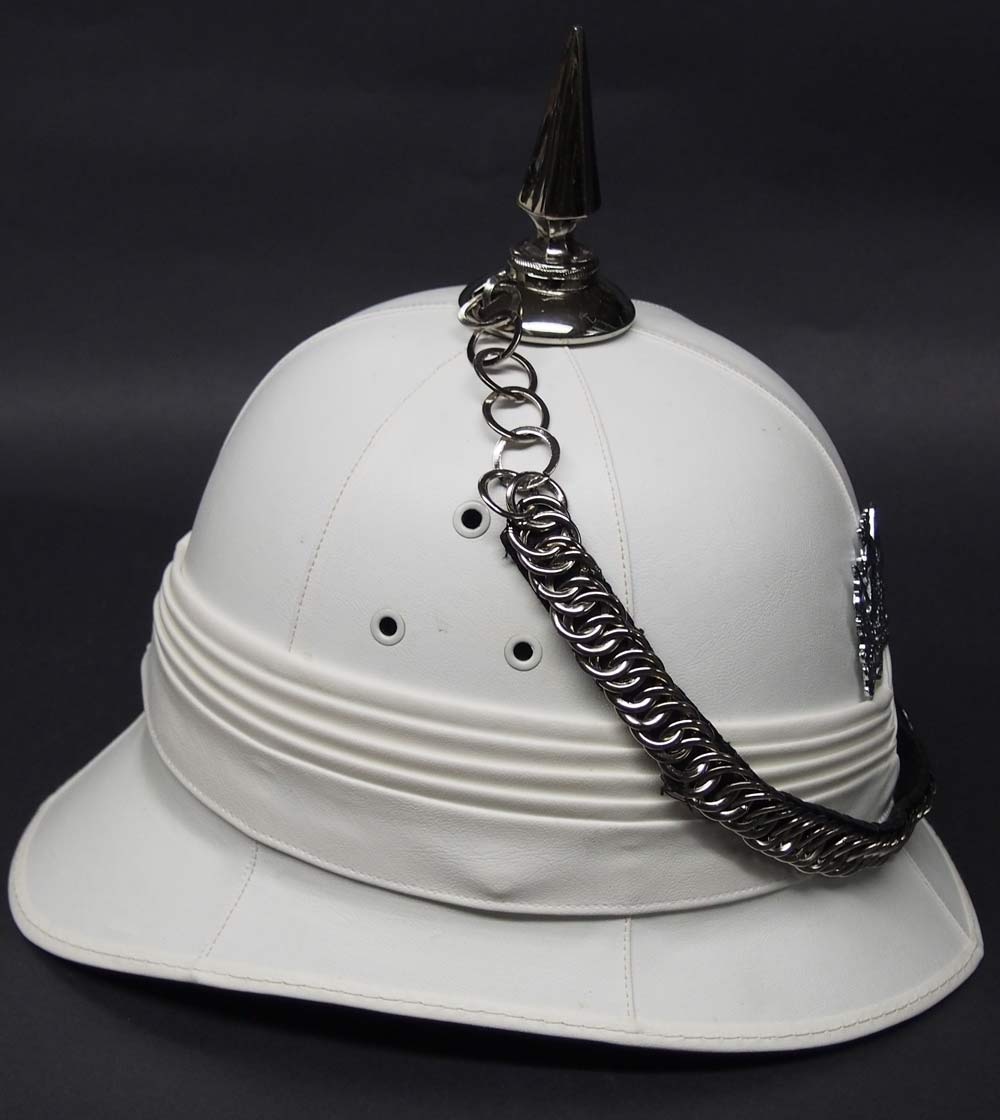
Helmet to the Lancer Band, the Regimental Band of the 1st/15th Royal New South Wales Lancers.
The Lancer Band was formed as a mounted brass band, performing on horseback. The regiment’s original marches were March past at walk – “The Dragoon Guardsman”, March past at trot – “The Cavalier”, and March past at gallop – “Bonnie Dundee.” The Lancer Band remained attached to the NSW Lancers Regiment through all of its renamings and formations, including service during World Wars I and II.
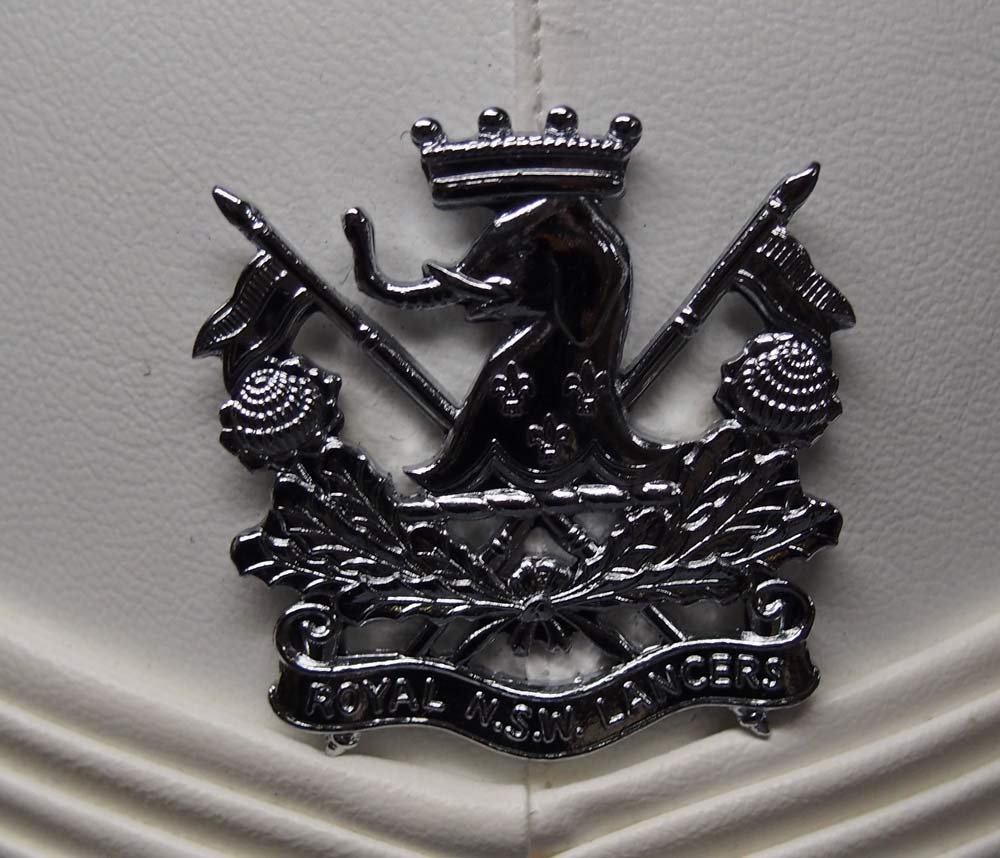
The badge of the Lancers Band
Members of the band are musicians by their Army trade, and this is their primary role within the Regiment and the Army. Entry to the band is based on competitive audition through the Defence Force School of Music and the Australian Army Band Corps. Members of the band must be able to perform in a number of ensemble formats, which include a full military marching band, a big band or jazz ensemble, a rock band, a jazz quartet, a wind or brass quartet and an acoustic ensemble. Buglers and drummers of the drum corps can also be detached to support functions individually.
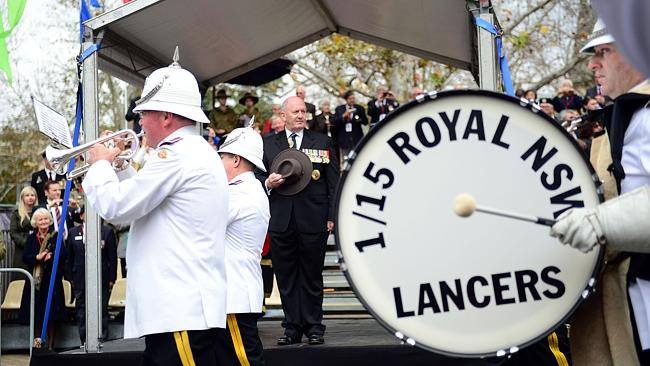
The Lancer Band on parade. (Photo: Brad22williams / Creative Commons)
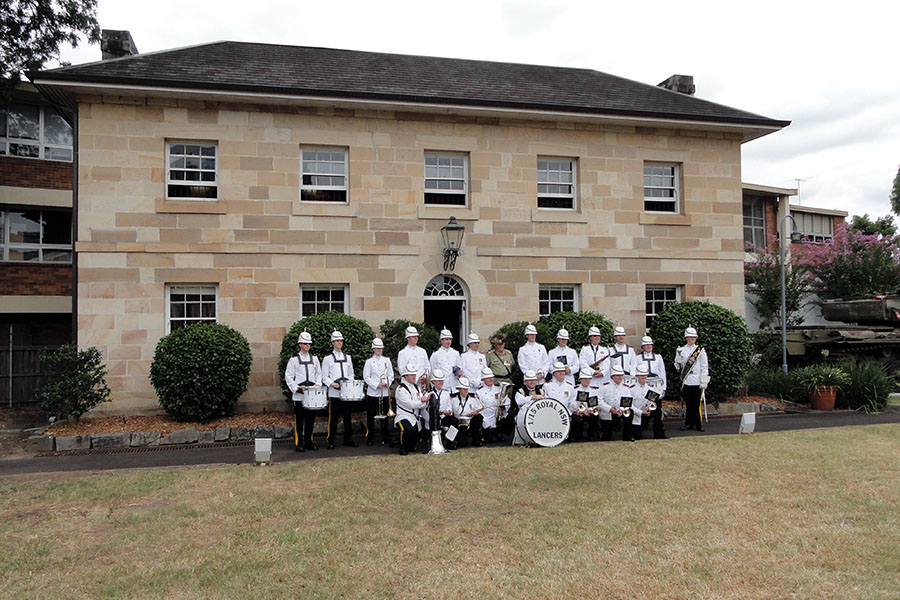
The Lancer Band at the Linden House Museum, the Regimental Museum. (Photo: Jp-8000 / Creative Commons)
The helmets are made of plastic and have the basic shape of the “colonial pattern” British Foreign Service helmet. This includes a plastic integrated puggaree. The Band Corps helmet is outfitted with a brass chinchain, spike and badge, while the Lancer Band helmet has a silver metal chinchain, spike and badge. Both helmets have an adjustable plastic liner system.
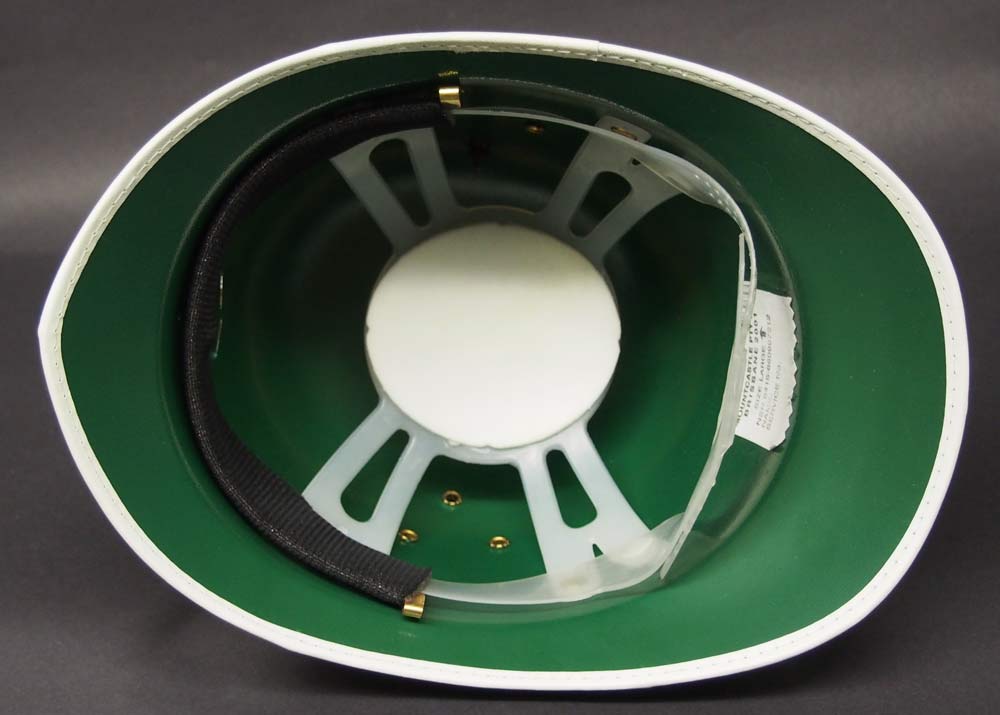
The liner system of the Lancer Band helmet. These helmets appear to be issued in basic “small,” “medium” and “large” sizes but are reasonably adjustable.
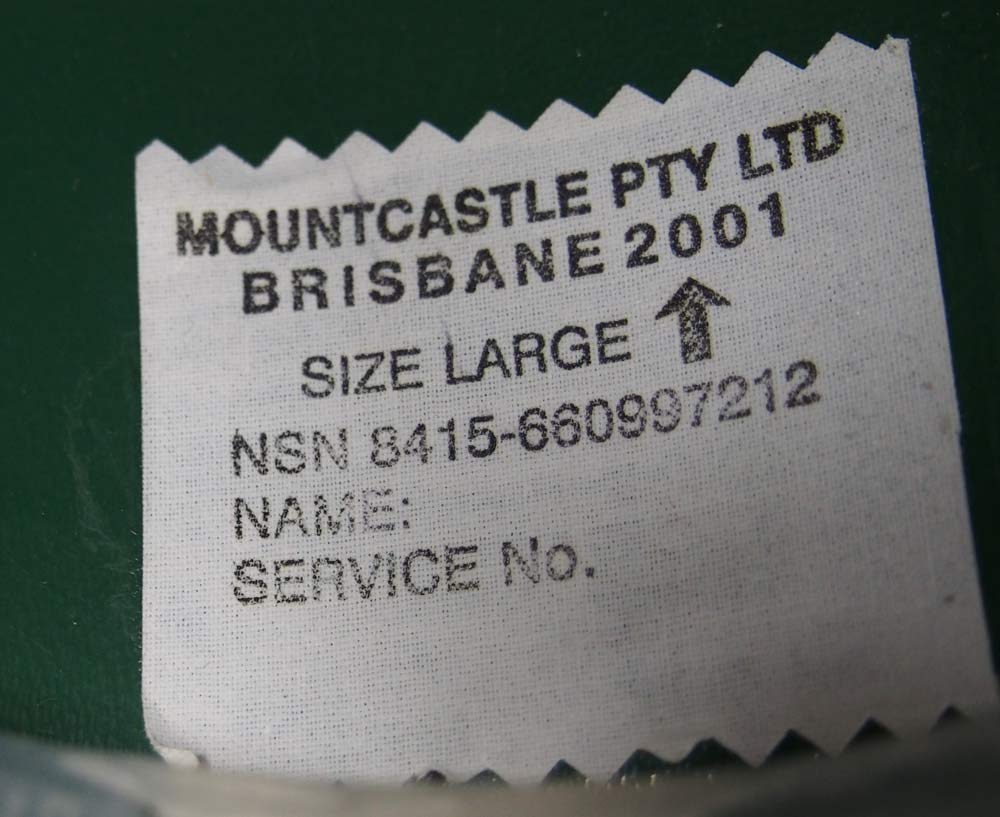
The maker label of the helmets – Mountcastle Pty Ltd of Brisbane produced the helmets. Note the “broad arrow” stamp on the label.
It isn’t known exactly when these helmets were introduced or how often new examples are produced. These are the only two known examples to have been offered as military surplus, highlight the pomp and circumstance of a bygone era even into the 21st century.
Peter Suciu
December 2019
